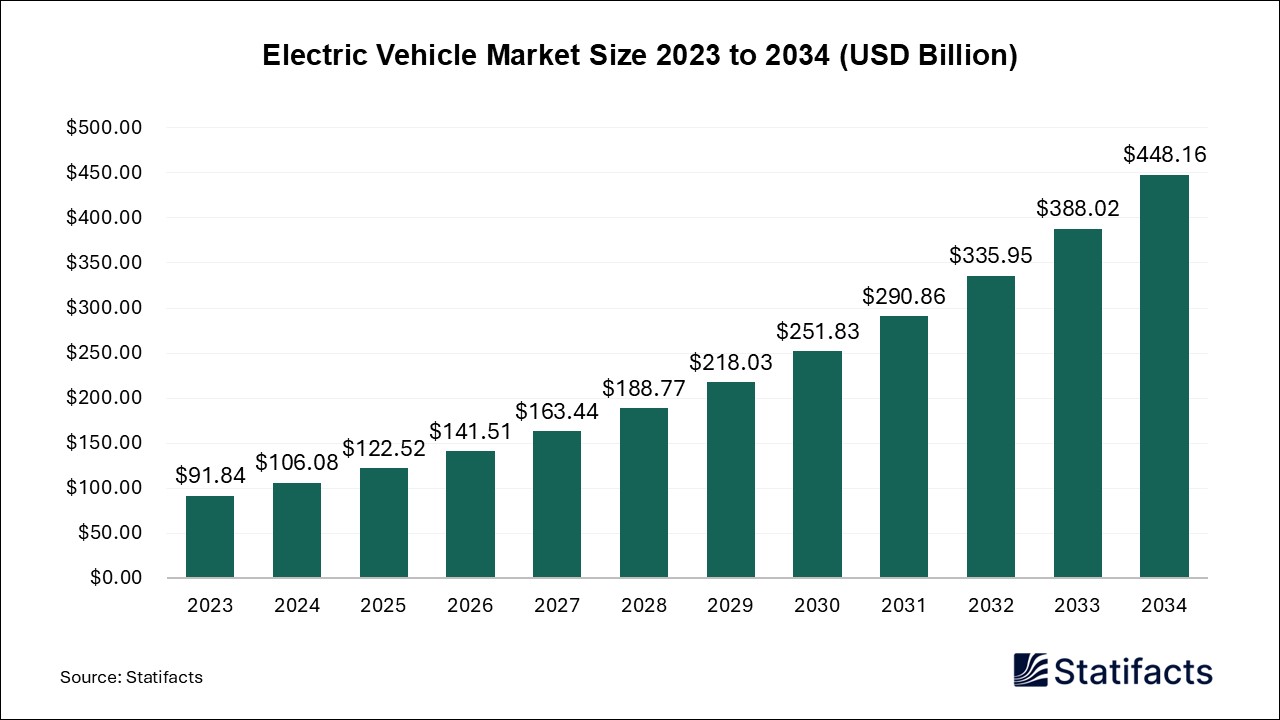
By clicking “Accept All Cookies” you agree to the storing of cookies on your device to enhance site navigation, analyze site usage, and assist in our marketing efforts.
Privacy PolicyMarket for Frequency Modules (By Type: Single-Frequency Modules and Multi-Frequency Modules; By Application: Consumer Electronics, Automotive and Transportation, Industrial IoT, Defense and Security, Marine and Aviation, and Others; By Region: North America, Europe, Asia Pacific, and LAMEA) Industry Size, Share, Growth, Trends 2025 to 2034
The global compact GNSS module market size was valued at USD 1,367 million in 2024, is projected to reach approximately USD 2,269 million by 2034. Driven by its rising popularity in consumer electronics and connected devices. These modules, which integrate multiple satellite positioning systems such as GPS, GLONASS, Galileo, and BeiDou, are designed to provide high-precision navigation and timing in compact, power-efficient formats. Their versatility has enabled widespread adoption across industries ranging from automotive and consumer electronics to defense, agriculture, and logistics.
| Reports Attributes | Statistics |
| Market Size in 2024 | USD 1,367 Million |
| Market Size in 2025 | USD 1,438 Million |
| Market Size in 2031 | USD 1,949 Million |
| Market Size by 2034 | USD 2,269 Million |
| CAGR 2025 to 2034 | 5.2% |
| Base Year | 2024 |
| Forecast Period | 2025 to 2034 |
The market has been experiencing accelerated growth driven by the growing use of GPS-enabled devices such as smartphones, tablets, drones, wearables, and smart home systems. As consumers demand accurate, real-time location tracking, compact GNSS modules have become an essential component in both everyday and industrial applications. Furthermore, the rise of Internet of Things (IoT) ecosystems has reinforced demand, as more connected devices require embedded GNSS functionality to enable efficient monitoring and geolocation services.
One of the primary factors fueling growth in the compact GNSS module market is the rapid adoption of autonomous and connected vehicles. These modules are integral to Advanced Driver Assistance Systems (ADAS), real-time navigation, and autonomous driving platforms, where centimeter-level positioning accuracy is crucial for safety and functionality. The expansion of smart transportation networks across countries such as the United States, China, Germany, and Japan is further amplifying demand for compact and high-performance modules.
Additionally, drones and unmanned aerial vehicles (UAVs) are increasingly being designed with lightweight GNSS modules, offering enhanced flight control, mapping precision, and operational reliability. The agriculture sector is also leveraging these systems for precision farming, enabling farmers to map and optimize land usage with minimal resource waste. Moreover, the surge in wearable technology, including fitness trackers and smartwatches, has opened new opportunities for compact, energy-efficient GNSS designs that deliver accurate performance tracking and navigation assistance.
Despite its robust growth outlook, the market faces certain challenges. Urban environments characterized by tall buildings and signal interference often disrupt satellite connectivity and reduce positioning accuracy, a limitation known as the urban canyon effect. These signal obstructions can hinder performance in densely populated cities, especially for autonomous navigation and delivery systems that depend on seamless location data.
However, continuous technological advancements are overcoming these barriers. The integration of 5G connectivity with GNSS modules is expected to significantly enhance signal stability and reduce latency. With 5G networks enabling faster data transmission, devices can achieve higher synchronization precision, improving navigation and tracking performance across multiple industries. The transition toward multi-frequency and multi-constellation GNSS modules is another promising development, offering improved accuracy and reliability even under challenging signal conditions.
The implementation of Artificial Intelligence (AI) and Machine Learning (ML) is revolutionizing the GNSS module industry. These technologies enhance real-time signal processing by dynamically analyzing multiple parameters, compensating for noise, interference, and environmental distortions. AI-based algorithms also help predict and correct positional errors, improving accuracy in navigation and mapping applications.
Autonomous systems increasingly rely on AI-enabled GNSS data fusion, combining inputs from sensors such as LiDAR, cameras, and inertial measurement units (IMUs). This multi-sensor integration allows for continuous, precise positioning even in GPS-degraded environments. Furthermore, AI and ML are improving the design and manufacturing of GNSS modules by enabling predictive maintenance, optimizing power efficiency, and reducing production costs through data-driven process control.
As AI continues to evolve, the compact GNSS module market is expected to transition toward intelligent navigation systems capable of self-learning and adaptive positioning. This evolution will not only enhance the accuracy and responsiveness of connected devices but also expand their applications in robotics, smart infrastructure, and next-generation mobility solutions..
| Regions | Shares (%) |
| North America | 25% |
| Asia Pacific | 45% |
| Europe | 20% |
| LAMEA | 10% |
| Segments | Shares (%) |
| Single-Frequency Modules | 65% |
| Multi-Frequency Modules | 35% |
| Segments | Shares (%) |
| Consumer Electronics | 30% |
| Automotive and Transportation | 22% |
| Industrial IoT | 20% |
| Defense and Security | 15% |
| Marine and Aviation | 7% |
| Others | 6% |
Published by Shubham Desale
| Type | 2024 | 2025 | 2026 | 2027 | 2028 | 2029 | 2030 | 2031 | 2032 | 2033 | 2034 |
|---|---|---|---|---|---|---|---|---|---|---|---|
| Single-Frequency Modules | 888.55 | 927.56 | 968.23 | 1,010.62 | 1,054.80 | 1,100.85 | 1,148.83 | 1,198.82 | 1,250.90 | 1,305.17 | 1,361.69 |
| Multi-Frequency Modules | 478.45 | 510.52 | 544.63 | 580.91 | 619.49 | 660.51 | 704.12 | 750.48 | 799.76 | 852.13 | 907.79 |
| Application | 2024 | 2025 | 2026 | 2027 | 2028 | 2029 | 2030 | 2031 | 2032 | 2033 | 2034 |
|---|---|---|---|---|---|---|---|---|---|---|---|
| Consumer Electronics | 410.10 | 429.99 | 450.83 | 472.68 | 495.59 | 519.60 | 544.77 | 571.14 | 598.79 | 627.77 | 658.15 |
| Automotive and Transportation | 300.74 | 317.82 | 335.85 | 354.91 | 375.04 | 396.31 | 418.77 | 442.49 | 467.55 | 494.02 | 521.98 |
| Industrial IoT | 273.40 | 289.05 | 305.60 | 323.08 | 341.56 | 361.08 | 381.71 | 403.51 | 426.54 | 450.88 | 476.59 |
| Defense and Security | 205.05 | 215.71 | 226.93 | 238.73 | 251.14 | 264.20 | 277.94 | 292.39 | 307.60 | 323.60 | 340.42 |
| Marine and Aviation | 95.69 | 102.10 | 108.93 | 116.18 | 123.90 | 132.10 | 140.82 | 150.10 | 159.95 | 170.43 | 181.56 |
| Others | 82.02 | 83.41 | 84.72 | 85.94 | 87.06 | 88.07 | 88.94 | 89.67 | 90.23 | 90.61 | 90.78 |
| Region | 2024 | 2025 | 2026 | 2027 | 2028 | 2029 | 2030 | 2031 | 2032 | 2033 | 2034 |
|---|---|---|---|---|---|---|---|---|---|---|---|
| North America | 341.75 | 358.08 | 375.19 | 393.11 | 411.88 | 431.53 | 452.12 | 473.68 | 496.26 | 519.91 | 544.68 |
| Europe | 273.40 | 289.05 | 305.60 | 323.08 | 341.56 | 361.08 | 381.71 | 403.51 | 426.54 | 450.88 | 476.59 |
| Asia Pacific | 615.15 | 650.01 | 686.84 | 725.74 | 766.82 | 810.23 | 856.06 | 904.48 | 955.61 | 1,009.62 | 1,066.66 |
| LAMEA | 136.70 | 140.93 | 145.23 | 149.60 | 154.03 | 158.52 | 163.06 | 167.64 | 172.26 | 176.90 | 181.56 |
| Subsegment | 2024 | 2025 | 2026 | 2027 | 2028 | 2029 | 2030 | 2031 | 2032 | 2033 | 2034 |
|---|---|---|---|---|---|---|---|---|---|---|---|
| Single-Frequency Modules | 888.55 | 927.56 | 968.23 | 1,010.62 | 1,054.80 | 1,100.85 | 1,148.83 | 1,198.82 | 1,250.90 | 1,305.17 | 1,361.69 |
| Multi-Frequency Modules | 478.45 | 510.52 | 544.63 | 580.91 | 619.49 | 660.51 | 704.12 | 750.48 | 799.76 | 852.13 | 907.79 |
| Subsegment | 2024 | 2025 | 2026 | 2027 | 2028 | 2029 | 2030 | 2031 | 2032 | 2033 | 2034 |
|---|---|---|---|---|---|---|---|---|---|---|---|
| Consumer Electronics | 410.10 | 429.99 | 450.83 | 472.68 | 495.59 | 519.60 | 544.77 | 571.14 | 598.79 | 627.77 | 658.15 |
| Automotive and Transportation | 300.74 | 317.82 | 335.85 | 354.91 | 375.04 | 396.31 | 418.77 | 442.49 | 467.55 | 494.02 | 521.98 |
| Industrial IoT | 273.40 | 289.05 | 305.60 | 323.08 | 341.56 | 361.08 | 381.71 | 403.51 | 426.54 | 450.88 | 476.59 |
| Defense and Security | 205.05 | 215.71 | 226.93 | 238.73 | 251.14 | 264.20 | 277.94 | 292.39 | 307.60 | 323.60 | 340.42 |
| Marine and Aviation | 95.69 | 102.10 | 108.93 | 116.18 | 123.90 | 132.10 | 140.82 | 150.10 | 159.95 | 170.43 | 181.56 |
| Others | 82.02 | 83.41 | 84.72 | 85.94 | 87.06 | 88.07 | 88.94 | 89.67 | 90.23 | 90.61 | 90.78 |
| Subsegment | 2024 | 2025 | 2026 | 2027 | 2028 | 2029 | 2030 | 2031 | 2032 | 2033 | 2034 |
|---|---|---|---|---|---|---|---|---|---|---|---|
| North America | 341.75 | 358.08 | 375.19 | 393.11 | 411.88 | 431.53 | 452.12 | 473.68 | 496.26 | 519.91 | 544.68 |
| Europe | 273.40 | 289.05 | 305.60 | 323.08 | 341.56 | 361.08 | 381.71 | 403.51 | 426.54 | 450.88 | 476.59 |
| Asia Pacific | 615.15 | 650.01 | 686.84 | 725.74 | 766.82 | 810.23 | 856.06 | 904.48 | 955.61 | 1,009.62 | 1,066.66 |
| LAMEA | 136.70 | 140.93 | 145.23 | 149.60 | 154.03 | 158.52 | 163.06 | 167.64 | 172.26 | 176.90 | 181.56 |
To get full access to our Market Insights, you need a Professional Account or a Business Suite.

You will receive an email from our Business Development Manager. Please be sure to check your SPAM/JUNK folder too.

You will receive an email from our Business Development Manager. Please be sure to check your SPAM/JUNK folder too.

Our customers work more efficiently and benefit from



